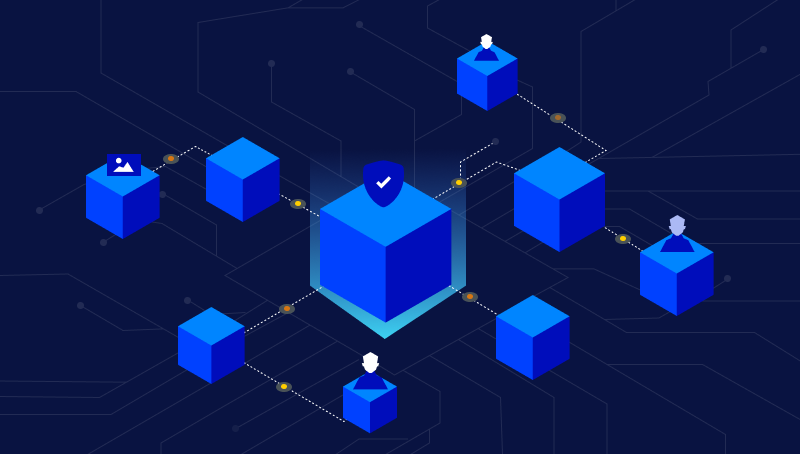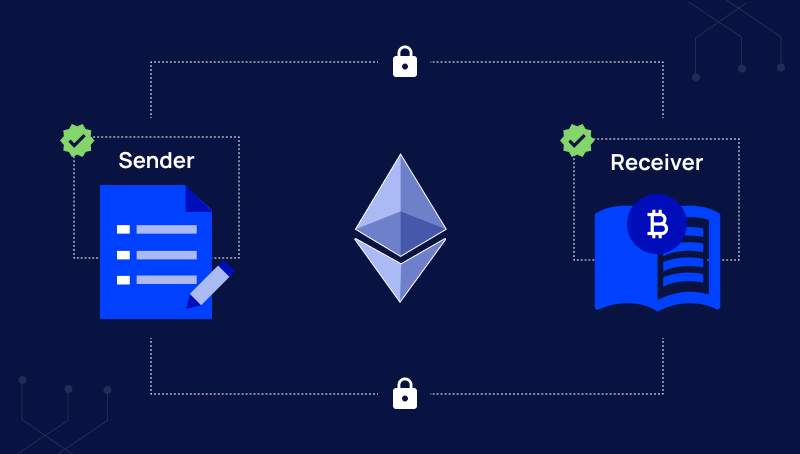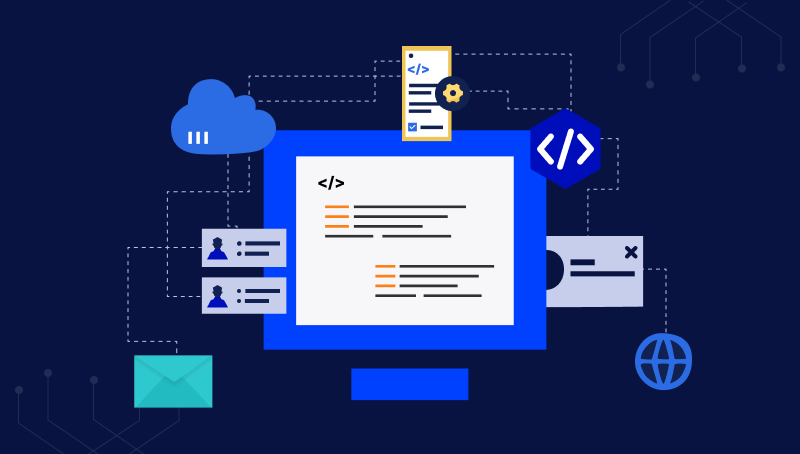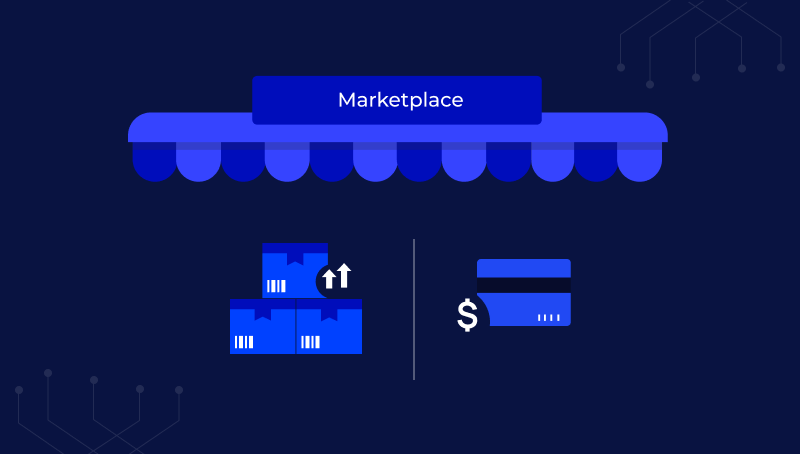
Building a blockchain-based multi-vendor marketplace is one of the common use cases of a laravel eCommerce system.
A blockchain marketplace is a platform that uses blockchain technology to facilitate the buying and selling of goods and services. Transactions on the blockchain are secure, transparent, and immutable since the decentralization and distribution.
In a blockchain marketplace, transactions are recorded on the blockchain, which allows for a permanent record of all transactions and ensures that they cannot be altered or tampered with.
Thus, this makes blockchain technology well-suited for use in marketplaces, as it helps to establish trust and security between buyers and sellers.
Transactions in Blockchain Marketplace
Smart contracts facilitate transactions in blockchain marketplaces, which are contracts that self-execute with the terms of the agreement written directly into code. Here’s how transactions happen in a blockchain marketplace:
- The buyer selects the product or service they want to purchase and adds it to their shopping cart.
- The buyer proceeds to the checkout page, where they enter their payment details and confirm the transaction.
- Once the payment will process then the fund will transfer from the buyer’s account to the seller’s account.
- The transaction is recorded on the blockchain, along with details such as the date, time, and amount of the transaction.
- Finally, the product or service will deliver to the buyer.
Overall, transactions in a blockchain marketplace are fast, secure, and transparent, making them an attractive option for both buyers and sellers.
How to create a blockchain-based multi-vendor marketplace?
Creating a blockchain-powered multi vendor eCommerce marketplace would require a few technical components:
1. A blockchain platform:
This could be a public blockchain like Ethereum or a private blockchain built using a blockchain framework like Hyperledger Fabric.

2. Smart contracts:
Furthermore, smart contracts are self-executing agreements with the terms of the transaction written directly into the code.

3. Cryptocurrency wallets:
These are in use to store and transfer digital assets on the blockchain.

4. Front-end development:
Moreover, a user-friendly interface would need to be developed for the marketplace which could be a web or mobile application.

5. Integration with existing systems:
The marketplace would likely need to integrate with existing systems such as payment gateways and inventory management systems.

6. Security and scalability:
Ensuring the security and scalability of the marketplace would be important, as it would handle sensitive data and a large number of transactions.

Once you have taken care of adobe requirements, finally, you would need to test and deploy the marketplace on a testnet before launching it on the mainnet to ensure that it is functioning as expected and to address any bugs or issues that are identified.
Workflow of blockchain-based multi-vendor marketplace
A blockchain-based multi-vendor marketplace works by utilizing the decentralized and immutable nature of blockchain technology. It helps to create a platform where multiple vendors can sell their products or services directly to consumers. Here’s what the flow looks like:
- Vendors can create listings for their products or services on the marketplace. These get stored on the blockchain as smart contracts.
- When a consumer wants to purchase a product or service, they can do so by executing the smart contract. Thus it makes a payment in the form of cryptocurrency.
- The payment is sent to the vendor’s cryptocurrency wallet, and the product or service is transferred to the consumer.
- The transaction is recorded on the blockchain, providing transparency and immutability for all parties involved.
- The smart contract can also contain terms and conditions, and dispute resolution mechanisms. With other details that can be automatically enforced by the blockchain.
- The marketplace can also use a decentralized autonomous organization (DAO) to govern the platform. This is controlled by token holders who can vote on the platform’s rules and regulations.
- The use of smart contracts and blockchain technology in a marketplace can drop the need for intermediaries. This reduces transaction costs and increases trust between vendors and consumers.
Infographic for Blockchain Multi-Vendor Marketplace

In conclusion, creating a blockchain-based multi-vendor marketplace is a complex process. It requires a thorough understanding of blockchain technology, smart contracts, and decentralized applications.
However, by following the steps outlined in this blog post you can design and build a marketplace that is secure, and scalable.
Remember to conduct a thorough analysis of your requirements and goals. It is also essential to choose the right blockchain platform, design and test your smart contracts and DApp, and implement a secure and user-friendly front end.
Hence, with the right approach, you can create a successful and profitable blockchain-based multi-vendor marketplace.



2 comments
You can check it out the Live Demo & Video tutorial from the below link.
https://bagisto.com/en/nft-marketplace/
Thanks & Regards